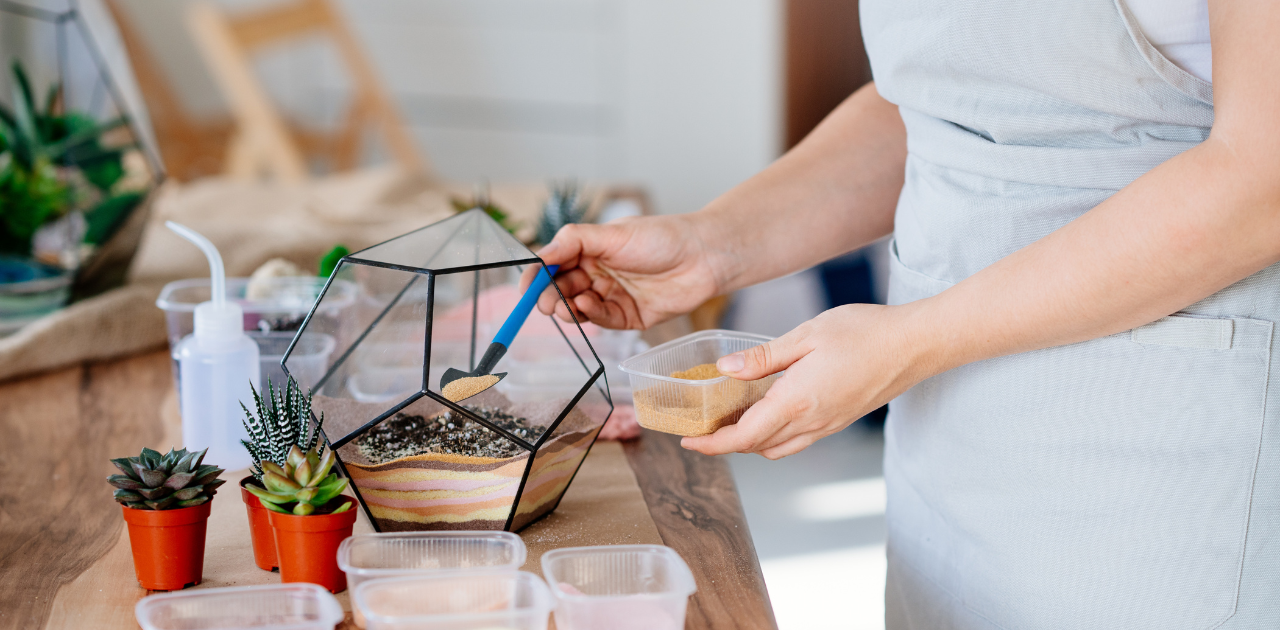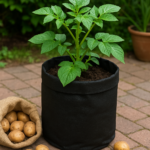Succulents have quickly become popular indoor and outdoor plants, beloved for their ability to thrive on minimal care and unique, eye-catching appearance. But when it comes to fertilizing these hardy plants, many succulent enthusiasts ask: Is fertilizer bad for succulents? These resilient plants are naturally adapted to grow in tough, nutrient-poor environments, making fertilizing tricky.
While some gardeners believe succulents don’t need fertilizer, others find that light feeding can encourage healthier growth and more vibrant colors. However, over-fertilizing can harm succulents, leading to issues like root burn, leggy growth, or even plant death. In this guide, we’ll explore everything you need to know about fertilizing succulents: when it’s beneficial, the best fertilizer types, and how to avoid common mistakes to keep your succulents thriving.
What Are Succulents?

Succulents are plants known for storing water within their thick, fleshy leaves, stems, or roots. This adaptation helps them survive in arid environments with minimal water, like deserts. Some popular succulents include aloe vera, jade plants, and the widely loved Echeveria. The term “succulent” encompasses a diverse plant species, each uniquely adapted to thrive in dry conditions.
Read to know: Succulent Candles: A Blend of Nature and Tranquility
Understanding the Basics of Succulent Plants
Succulents come in a variety of shapes, sizes, and colors. Their water-retaining ability sets them apart from other plants, enabling them to go extended periods without watering. This feature makes them ideal for busy plant owners or those who forget to water regularly. Their shallow roots are spread wide, efficiently absorbing water from light rain or morning dew.
Why They’re Different from Other Houseplants
Unlike most houseplants that need frequent watering and rich soil, succulents prefer well-draining soil and infrequent watering. They’re prone to root rot if they sit in wet soil for too long. Additionally, succulents often need more sunlight than typical indoor plants, making them better suited to bright, sunny locations. This makes them distinct in care needs and adaptability compared to traditional houseplants.
Fertilizing: Friend or Foe?
Regarding succulents, fertilizing can be a double-edged sword. On one hand, a little fertilizer can help boost growth, enhance the colors, and strengthen the plant’s overall health. Succulents, however, are naturally adapted to survive in nutrient-poor soils, which means they don’t need as much fertilizer as other plants. Too much fertilizer can cause more harm than good.
For many succulents, fertilizing is a friend when applied sparingly and correctly. Light feeding can encourage new growth during the growing season and even help some varieties bloom. But overdoing it can lead to fast, weak growth that makes the plant leggy or even disease-prone. Over-fertilizing can also cause root burn, where the roots are damaged by excess nutrients, leaving the succulent vulnerable.
So, is fertilizing a friend or foe? It all depends on how it’s done. With the right approach, fertilizing can boost succulents without compromising their natural resilience. The key is knowing when and how much to fertilize to keep your succulents thriving without risking their health.
Do Succulents Need Fertilizer?

Succulents are hardy plants known for their ability to thrive in environments with limited resources. While they don’t necessarily need fertilizer to survive, it can help them grow more robustly, mainly when kept in containers. When used sparingly, fertilizer can help succulents maintain their color, produce new growth, and even bloom. However, their requirements are far less than those of other plants.
Examining the Natural Habitat of Succulents
Succulents originate from regions with poor, rocky soil and infrequent rainfall. In these natural habitats, nutrients are scarce, and succulents have adapted to survive with minimal feeding. These plants grow slowly, making the most of the few nutrients available. This means that while succulents can handle some fertilizer, they’re well-equipped to thrive without it.
Minimal Nutritional Needs
Due to their slow growth and low nutrient requirements, succulents are pretty self-sufficient. They primarily need nitrogen, phosphorus, and potassium (the N-P-K nutrients), but in smaller quantities than most other plants. Over-fertilizing can disrupt their natural growth pattern, often leading to unwanted side effects such as stretched or weakened growth and root damage.
When is Fertilizer Necessary for Succulents?
For most succulents, fertilizing is only necessary during specific times, such as growth spurts. In general, succulents experience growth periods in the spring and summer. During these times, a small dose of fertilizer can help encourage healthy development. On the other hand, most succulents go dormant during fall and winter, when they require even less water and no fertilization.
Growth Spurts and Dormant Seasons
Spring is the ideal season to fertilize succulents, as this is when they begin their active growth phase. A light feeding in early spring, with an optional second round in summer, can boost new growth. Avoid fertilizing during the dormant months, as it can stress the plant and potentially harm it while it rests.
Signs Your Succulent Could Use Fertilizer
Signs that your succulent may benefit from a nutrient boost include:
- Slow or stunted growth
- Pale or discolored leaves
- Thinning or leggy stems
- Lack of flowers during blooming season
While these symptoms don’t always mean a lack of nutrients, they can indicate that light feeding could help the plant thrive.
Types of Fertilizers Suitable for Succulents
Choosing the right fertilizer is key to helping succulents without overwhelming them. There are two main categories to consider: organic and synthetic fertilizers. Each has advantages, and the best choice depends on your succulents’ needs and gardening preferences.
Organic vs. Synthetic Fertilizers
Organic fertilizers, like compost tea or worm castings, provide gentle, slow-releasing nutrients that are less likely to cause a nutrient burn. Gardeners seeking a natural approach often prefer these. On the other hand, synthetic fertilizers deliver a concentrated dose of nutrients, which can be beneficial when used sparingly. Liquid succulent fertilizers, for example, are easy to dilute and apply, allowing for precise control over the nutrient levels.
Nutrient Requirements (N-P-K Ratio)
The ideal N-P-K ratio for succulents is generally low in nitrogen, as excessive nitrogen can lead to fast, leggy growth. A balanced mix, such as a 2-4-4 or 3-5-5, provides sufficient phosphorus for healthy roots and potassium for overall strength while limiting nitrogen. It’s usually best to dilute fertilizer to half or even quarter strength for succulents, applying it gently to avoid overwhelming their low nutrient requirements.
How Often Should You Fertilize Succulents?
Succulents typically require minimal fertilization. For most varieties, once or twice a year is sufficient, with early spring being ideal for giving them a boost at the start of their growing season. Some gardeners also opt to fertilize again in summer, but frequent feeding can often cause more harm than good.
Ideal Fertilization Schedule
The general rule is to fertilize succulents in spring and, if needed, again in early summer. Always avoid fertilizing during the dormant months (fall and winter), as they aren’t actively growing and don’t need extra nutrients. Established and thriving succulents often do well with just a single annual feeding.
Adjustments for Indoor vs. Outdoor Succulents
Indoor succulents often grow slower due to lower light levels and temperature variations, so they typically need less fertilizer than outdoor succulents. Outdoor succulents may experience more growth, especially in warm, sunny climates, so they benefit from more feeding.
Common Fertilizer Mistakes with Succulents
Over-fertilizing Hazards
Succulents are sensitive to over-fertilization, which can lead to weak, rapid growth, making them more prone to pests and diseases. It can also cause root burn, where the roots are damaged by excess nutrients, which weakens the plant and can lead to death. Over-fertilizing can also cause succulent leaves to become soft and mushy, losing their compact, fleshy structure.
Under-fertilizing Myths
It’s commonly believed that if a succulent grows slowly, it must need more fertilizer. However, succulents naturally grow slower, and under-fertilizing is generally not a significant concern. Succulents can grow well without additional nutrients without adequate sunlight and water.
Signs of Fertilizer Damage in Succulents

Fertilizer damage in succulents can manifest in various ways, often in the plant’s leaves and overall structure. Signs to watch for include:
- Yellowing and Wilting: When a succulent receives too much fertilizer, its leaves may turn yellow, becoming wilted or droopy as they lose their natural firmness.
- Root Burn and Overgrowth: Excessive fertilizer can lead to root burn, causing the roots to weaken and become unable to absorb water efficiently. Overgrowth is another sign of excess nutrients; plants may grow leggy and stretch toward light sources.
How to Properly Fertilize Succulents
Step-by-Step Guide to Fertilizing Succulents
- Select a Suitable Fertilizer: Choose a balanced, low-nitrogen fertilizer, such as one with an N-P-K ratio around 2-4-4 or 3-5-5. If using a general-purpose fertilizer, dilute it to half or quarter strength to avoid overwhelming the plant.
- Water the Plant First: Water your succulent a day or two before applying fertilizer. This helps prevent root burn by ensuring moist soil, allowing the nutrients to disperse more evenly.
- Apply the Fertilizer: Use a diluted liquid fertilizer, pouring it directly onto the soil around the base of the plant. Avoid getting fertilizer on the leaves, which can cause burns or discoloration.
- Monitor the Plant: After fertilizing, monitor your succulent to ensure it’s responding well. If it shows signs of stress or damage, flush the soil with water to help remove excess nutrients.
Best Practices for Succulent Care
- Use a Well-Draining Soil Mix. This ensures that water doesn’t pool around the roots, which is essential for watering and fertilizing.
- Provide Adequate Light: Succulents need bright light to grow well, so place them in a sunny spot or under grow lights indoors.
- Water Sparingly: Succulents prefer dry conditions. Allow the soil to dry out completely between waterings.
What Happens if You Don’t Fertilize Succulents?
Natural Growth Patterns
If you decide not to fertilize your succulents, they’ll typically grow at a slower, more natural pace, often preferable for maintaining their compact shape and structure. Succulents are adapted to nutrient-poor conditions and resilient even without extra feeding.
Pros and Cons of Going Fertilizer-Free
Not fertilizing can help keep succulents from becoming too large or leggy, preserving their original shape. Additionally, you reduce the risk of issues like root burn or nutrient overload by forgoing fertilizer. However, some succulents may grow more slowly without fertilizer or lack the vibrant colors seen with occasional feeding. Ultimately, fertilizing succulents can be beneficial, but it’s not a strict necessity for keeping them healthy and beautiful.
Ideal Soil Mixes for Succulents and How They Impact Fertilization

The right soil mix is essential for succulent health and can significantly impact how they absorb nutrients. Succulents prefer well-draining soil that allows excess water to flow out quickly. A gritty mix of sand, perlite, and a small amount of organic material provides the ideal environment for succulents. This soil type helps prevent overwatering and ensures that any applied fertilizer disperses efficiently, reaching the roots without pooling and causing root rot.
The Role of Soil in Nutrient Supply
Soil is more than just a growing medium; it also serves as a nutrient reservoir. A well-draining soil mix balances aeration and moisture retention, allowing succulents to absorb nutrients effectively. Succulents need very little organic matter in their soil, as too much can hold excess water, creating conditions for root rot and fungal growth. Well-draining soil helps control the nutrients from fertilizers, minimizing the risk of over-fertilizing.
DIY Soil Mixes for Succulents
Creating your succulent soil mix at home is easy and often more affordable than buying commercial options. A simple blend can include:
- 2 parts potting soil
- 1 part coarse sand
- 1 part perlite or pumice
This combination offers the perfect balance for succulents, with ample drainage and just enough organic matter for light nutrient support. Depending on your succulents’ specific needs, you can also adjust this mix to include small amounts of other materials like coconut coir or gravel.
Homemade Fertilizer Options for Succulents
Homemade fertilizers offer a natural, gentle nutrient boost for succulents. Many gardeners prefer these options because they’re inexpensive and free from synthetic chemicals.
Compost Tea and Worm Castings
Compost tea and worm castings are nutrient-rich and easy to make at home. For compost tea, steep a small amount of compost in water for a few days, then strain and dilute before applying it to your succulents. Worm castings, the byproduct of earthworms, provide mild nutrients and can be mixed lightly into the soil or dissolved in water as a mild liquid fertilizer.
Coffee Grounds and Other Organic Solutions
Diluted coffee grounds can also serve as a fertilizer for succulents, adding trace amounts of nitrogen to support growth. Steep used coffee grounds in water for a day or two, then dilute further before applying. Other organic options include eggshells, which add calcium to the soil. Just crush them into a fine powder and occasionally sprinkle them on the soil surface.
When to Avoid Fertilizing Succulents Entirely
In certain situations, fertilizing succulents does more harm than good. Succulents don’t need fertilizer under stress or when recovering from overwatering pests or disease. Fertilizers can overstimulate growth when the plant needs to focus its energy on recovery.
Situations Where Fertilizer Can Do More Harm
Avoid fertilizing if your succulent is showing signs of distress, such as yellowing leaves, wrinkling, or black spots. Adding fertilizer at this time can worsen the plant’s condition by increasing nutrient demand or causing further stress. It’s best to wait until your succulent has fully recovered and shows signs of healthy growth before fertilizing again.
Succulents in Recovery or Stress
Succulents dealing with root rot, sunburn, or other issues should not be fertilized. Allow the plant to stabilize and resume average growth before considering light feeding. During these times, focus on providing consistent care—appropriate watering, proper lighting, and well-draining soil—until the succulent returns to health.
The Best Fertilizer Brands for Succulents
Several fertilizer brands cater specifically to succulents, offering balanced nutrient profiles that are low in nitrogen and easy to dilute. Some popular options include:
- Miracle-Gro Succulent Plant Food: This liquid fertilizer is easy to use and formulated for succulents, helping them stay vibrant and healthy.
- Espoma Organic Cactus Liquid Plant Food: An organic option that is gentle and designed for succulents and cacti.
- Schultz Cactus Plus Liquid Plant Food: Known for its balanced 2-7-7 ratio, this fertilizer provides essential nutrients without overwhelming succulents.
Recommended Products for Optimal Growth
For optimal results, consider fertilizers with a 2-4-4 or 3-5-5 N-P-K ratio. These provide just enough phosphorus and potassium without excessive nitrogen. Liquid fertilizers are often best for succulents, as they can be easily diluted and absorbed.
Budget-Friendly Options for Succulent Enthusiasts
If you’re looking for an affordable approach, consider homemade options like compost tea or diluted coffee grounds. These provide gentle nutrition without extra cost. Many succulent enthusiasts find these natural fertilizers more than sufficient for their plants’ needs, especially if applied sparingly.
FAQ
1. Can I use regular houseplant fertilizer for my succulents?
Yes, you can use regular houseplant fertilizer, but diluting it to half or even a quarter of the recommended strength is essential. Succulents don’t need as many nutrients as other houseplants, so using a standard fertilizer at full strength can lead to over-fertilization and potentially harm the plant.
2. How do I know if my succulent needs fertilizer?
Signs that a succulent may benefit from fertilizer include slow or stunted growth, pale or discolored leaves, and a lack of blooms during flowering seasons. However, these symptoms can also result from other factors, like insufficient light or improper watering, so always assess overall care before fertilizing.
3. Is coffee grounds a good fertilizer for succulents?
Diluted coffee grounds can be a gentle nitrogen source, which is beneficial in small amounts. Stepping coffee grounds in water for a day or two, then dilute the liquid before applying it to the soil. Be sure not to overuse coffee grounds, as excess nitrogen can encourage leggy succulent growth.
4. Can I fertilize my succulents during winter?
No, it’s generally best to avoid fertilizing succulents during winter. Most succulents go dormant during this season and don’t require additional nutrients. Fertilizing during dormancy can stress the plant and potentially lead to root damage, so it’s better to wait until the growing season in spring.
5. What are some signs of over-fertilization in succulents?
Over-fertilized succulents may exhibit symptoms like yellowing leaves, soft or mushy stems, rapid and weak growth, and root burn. If you suspect over-fertilization, flush the soil with water to help remove excess nutrients and give the plant a chance to recover. It’s essential to fertilize sparingly to prevent these issues.
Conclusion
Fertilizing succulents can be beneficial, but it’s essential to approach it with caution. Succulents have adapted to thrive with minimal nutrients, so over-fertilizing is a common mistake. Focus on well-draining soil, minimal but regular care, and light fertilizing during growth periods to keep succulents healthy. By choosing the right fertilizer, using the appropriate soil mix, and understanding when and how to fertilize, you’ll be well-equipped to maintain vibrant, thriving succulents in your home or garden.







